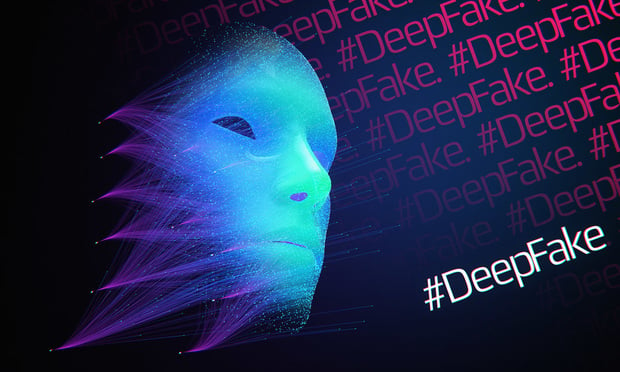Features

Antitrust Enforcement Agencies Target AI Companies
U.S. antitrust enforcement agencies may file complaints against the biggest companies advancing artificial intelligence, legal experts said in reaction to news reports of a handshake agreement between the Department of Justice and Federal Trade Commission.
Features

LJN Quarterly Update: 2024 Q1
Highlights some of the in-depth analysis and insights from lawyers and other practice area experts from the nine LJN Newsletters titles over the first quarter of 2024.
Features

Are You For Real? Dealing with the Proliferation of Deepfakes
Notwithstanding the significant threats facing companies as a result of deepfake technology, there are several things companies can do to protect themselves and their employees from becoming the victim of a deepfake scam.
Features

Lawyers' Views on Voice Dust-Up Between Scarlett Johansson and OpenAI
Actress Scarlett Johansson has threatened the generative software company OpenAI with legal action. And intellectual property lawyers have many thoughts about who might win, whether there's even a legal claim to be made and what it all means.
Features

Algorithms and Antitrust
The economic benefits realized from generative AI are nothing short of astounding. That is why it is so concerning that the DOJ, the FTC, and a small choir of members of Congress seem intent on regulating algorithms away from the economy on antitrust grounds.
Features

Gen AI Helped Me Write This Article: Does That Matter?
Technology, like gen AI, is a crafty tool that can fuel your creative engine. It's not about replacing your creativity but about enhancing it. It's about reimagining your creative process.
Features

Voice Actors' Class Action Challenges AI Use of Their Voices
LOVO, an artificial intelligence company focused on voice generation, has been hit with a proposed class action lawsuit, with the plaintiff voice actors arguing they have not been properly compensated for the use of their voices.
Features

How Will Criminal Law Enforcement Be Able to Police the Improper Use of AI?
Given the DOJ's limited tools to prosecute AI crimes where no one intended for the AI to violate the law, effective compliance likely will be the best defense for companies to avoid criminal charges for AI-based crimes.
Features

Gen-AI Created Influencers Bring New Marketing Risks
A steep rise in the use of GenAI and computer-generated influencers brings with it new marketing risks and considerations for celebrities, influencers, and businesses alike.
Features

Big Law Looks To Influence Vendor-Developed AI
In the AI edition of the classic "build versus buy" dilemma, some marquee firms have opted to leverage their position as the largest buyers of legal tech to influence vendor development of AI-powered services to suit their needs.
Need Help?
- Prefer an IP authenticated environment? Request a transition or call 800-756-8993.
- Need other assistance? email Customer Service or call 1-877-256-2472.
MOST POPULAR STORIES
- The 'Sophisticated Insured' DefenseA majority of courts consider the <i>contra proferentem</i> doctrine to be a pillar of insurance law. The doctrine requires ambiguous terms in an insurance policy to be construed against the insurer and in favor of coverage for the insured. A prominent rationale behind the doctrine is that insurance policies are usually standard-form contracts drafted entirely by insurers.Read More ›
- A Lawyer's System for Active ReadingActive reading comprises many daily tasks lawyers engage in, including highlighting, annotating, note taking, comparing and searching texts. It demands more than flipping or turning pages.Read More ›
- The Brave New World of Cybersecurity Due Diligence in Mergers and Acquisitions: Pitfalls and OpportunitiesLike poorly-behaved school children, new technologies and intellectual property (IP) are increasingly disrupting the M&A establishment. Cybersecurity has become the latest disruptive newcomer to the M&A party.Read More ›
- Abandoned and Unused Cables: A Hidden Liability Under the 2002 National Electric CodeIn an effort to minimize the release of toxic gasses from cables in the event of fire, the 2002 version of the National Electric Code ("NEC"), promulgated by the National Fire Protection Association, sets forth new guidelines requiring that abandoned cables must be removed from buildings unless they are located in metal raceways or tagged "For Future Use." While the NEC is not, in itself, binding law, most jurisdictions in the United States adopt the NEC by reference in their state or local building and fire codes. Thus, noncompliance with the recent NEC guidelines will likely mean that a building is in violation of a building or fire code. If so, the building owner may also be in breach of agreements with tenants and lenders and may be jeopardizing its fire insurance coverage. Even in jurisdictions where the 2002 NEC has not been adopted, it may be argued that the guidelines represent the standard of reasonable care and could result in tort liability for the landlord if toxic gasses from abandoned cables are emitted in a fire. With these potential liabilities in mind, this article discusses: 1) how to address the abandoned wires and cables currently located within the risers, ceilings and other areas of properties, and 2) additional considerations in the placement and removal of telecommunications cables going forward.Read More ›
- Guidance on Distributions As 'Disbursements' and U.S. Trustee FeesIn a recent case from the Bankruptcy Court for the District of Delaware, In re Paragon Offshore PLC, the bankruptcy court provided guidance on whether a post-plan effective date litigation trust's distributions constituted disbursements subject to the U.S. Trustee fee "tax."Read More ›
